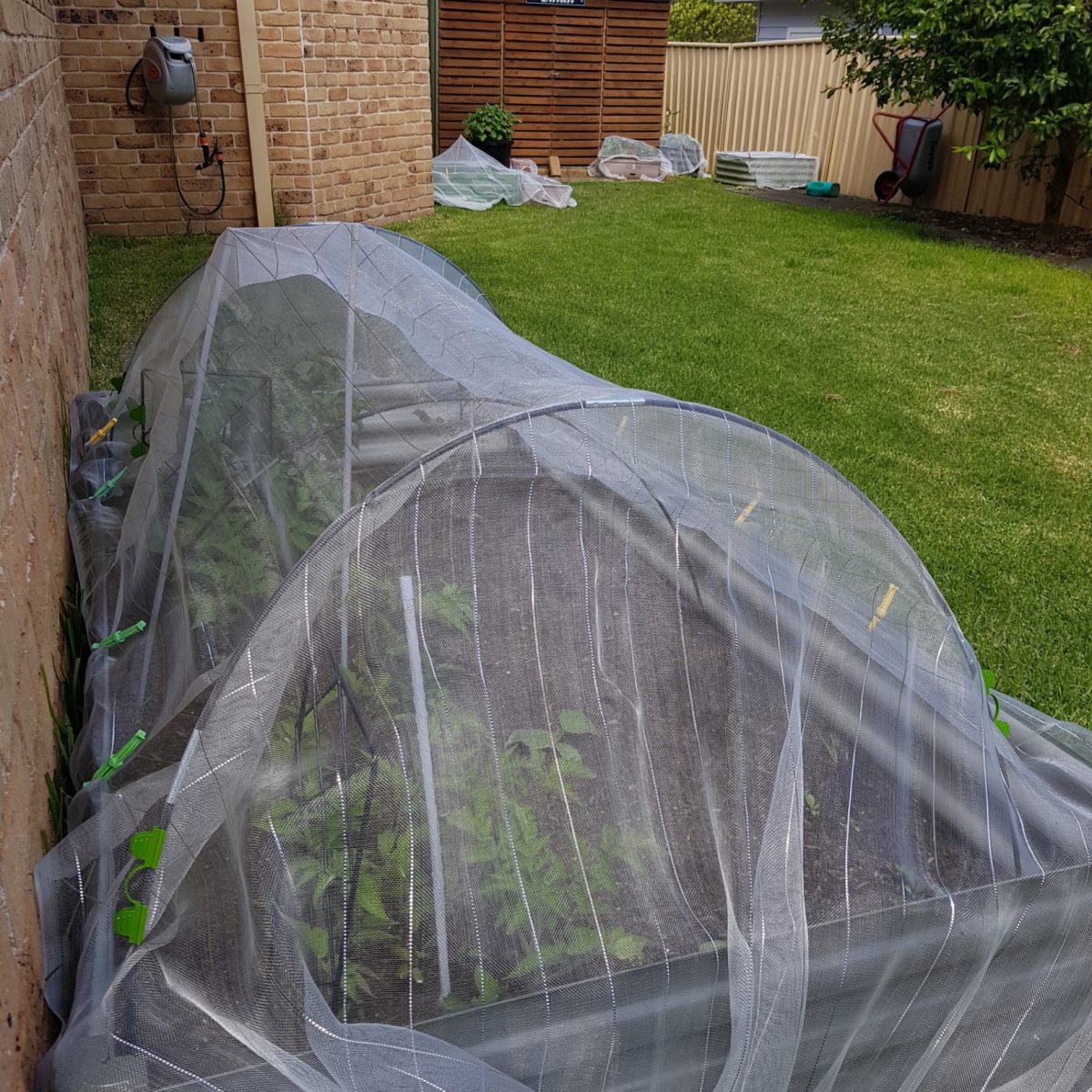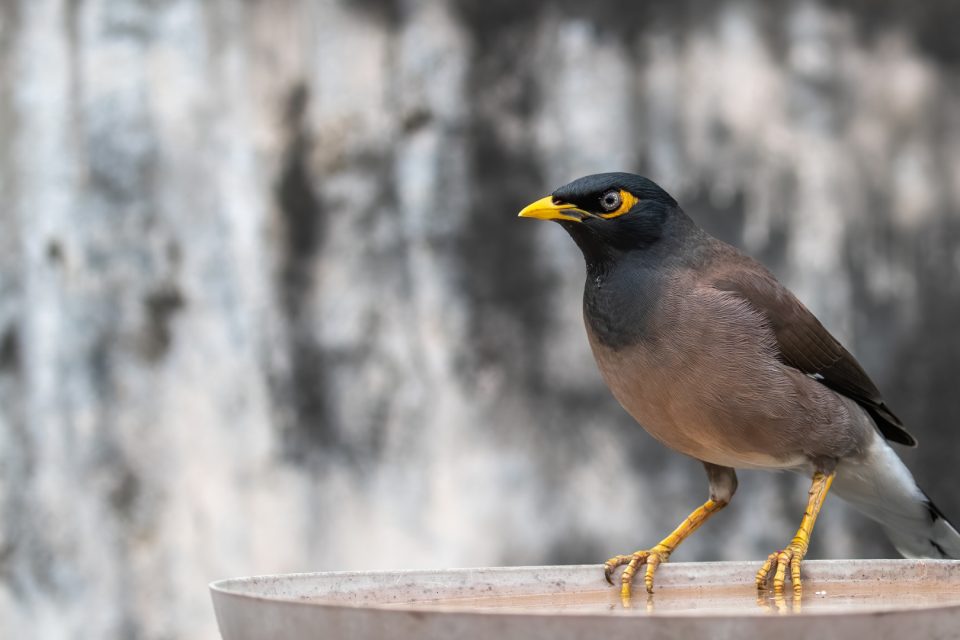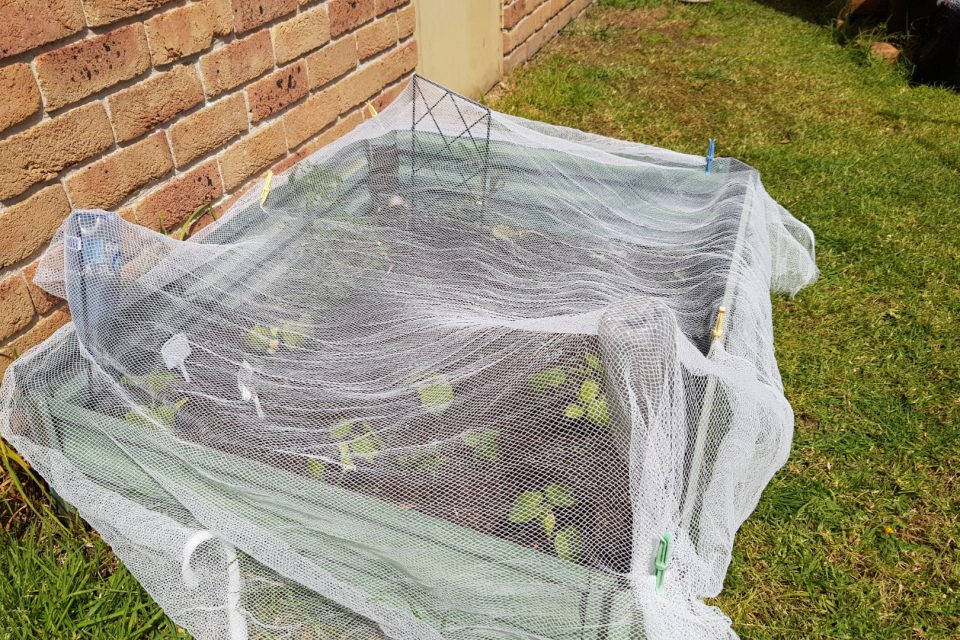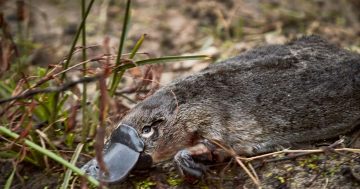
The fortress of netting that’s been erected to help keep out Indian Myna birds. Photo: Kellie O’Brien.
Last year weeks were spent raising tiny tomato, cucumber, zucchini and pumpkin seedlings, and carefully replanting them into the garden with the kind of dedication you’d expect from someone expecting a prize-winning harvest.
But within minutes, the Indian Myna birds swooped in like tiny-winged assassins and all my hard work was destroyed faster than you can scream “pest control”.
As I embark on another spring/summer growing season, already this pest species, also known as Common Myna birds, are perched up on the fence like a gang of delinquent teens, plotting how they’re going to destroy them once again.
I’ve tried everything – and I mean everything – to get rid of these feathered foes that come to the fore during the October to March breeding season after being introduced to Australia from Asia.
I started with a garden statue owl that hooted, but after a week of living with a horror movie soundtrack, it annoyed me so much I had to turn it off.
Either way, the Myna birds didn’t even blink. They ain’t ‘fraid of no owl.
Next came the plastic snake, which felt like a particularly genius idea at the time.
Apparently not. It only seemed to frighten me every time I reached into the garden. There’s nothing like a fake snake-induced heart attack to keep your gardening interesting.
More googling arrived at using shiny things, like CDs, aluminium foil, anything to dazzle them into submission.
Instead, I blinded myself with the sun reflecting off my homemade disco garden, while the birds, cool as the cucumbers they loved to destroy, strutted across like John Travolta in Saturday Night Fever.
These Myna birds are major smarties.
Within a day, they’ve figured out what you’re up to and they’re back destroying every plant you’ve carefully grown from seed – or spent large amounts of money on at Bunnings.
So now, in a desperate act of survival, I’ve resorted to the expense of netting everything using a netting system so elaborate I now own more clothes pegs than actual clothes.



My backyard looks akin to a low-budget remake of The Hunger Games, with me as the paranoid Katniss, netting every last tomato like my life depends on it.
But here’s the kicker: according to endless community Facebook groups, I can get rid of them, humanely of course.
Shellharbour and Wollongong city council websites provide information and links to guidelines for trapping pest birds, methods to quickly kill them humanely as per the animal welfare code of ethics, and then responsible disposing of them.
Men’s sheds are even building and selling the traps.
Problem is, while I’d gladly trap every last one of them, I don’t have the heart to do step two.
They might be regarded as the “rats of the sky”, but they’re still animals and I’m not ready to go full Terminator on them.
I grew up on a farm. So theoretically, I should be OK with this stuff, but I’m not.
The real issue is that these birds are wreaking havoc on the environment. They compete with native wildlife for nesting sites, take over hollows, and even prey on rare and endangered insects and skinks.
They’re noisy, they nest in your roof, and they’re one of only three birds on the World Conservation Union’s list of 100 most invasive species.
Not exactly the kind of houseguests you want hanging around.
Especially when they bring with them pathogens, mites and diseases.
Trust me, it’s a real treat when you wake one morning to see mites all over your wall, pillow … and yourself.
So these birds are not just a threat to my garden, but to human health as well.
So while I may not have the stomach for birdcide, I will continue to battle these winged warriors with my net fortress to ensure these rodents don’t ruin my best efforts to feed my family.
And in the meantime, you can report Indian Myna birds using the free FeralScan App or learn more here.

















